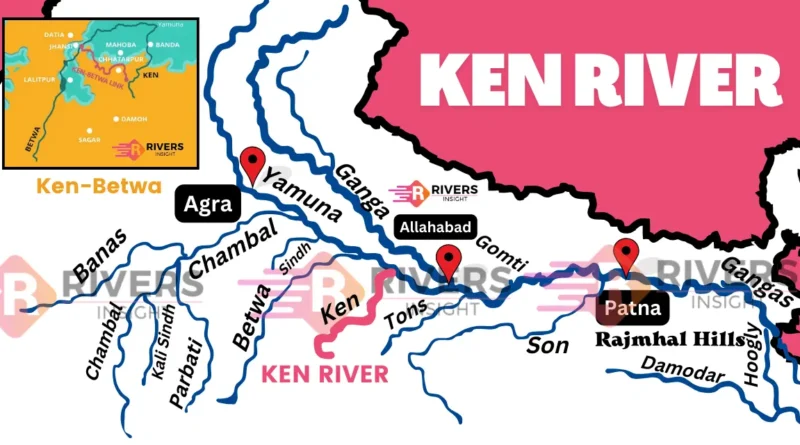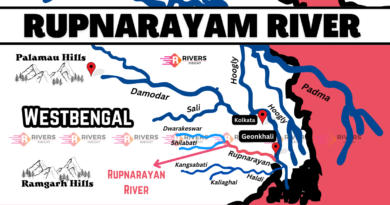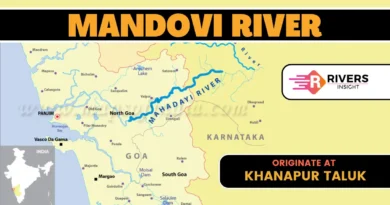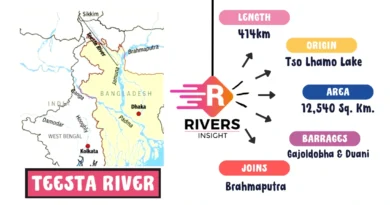Ken River: Mapping the Course
“The Ken River, located in central India, originates near Ahirgawan village and merges with the Yamuna River in Uttar Pradesh. In this Rivers Insight article, we’ll talk about the Ken River’s basin and its geographical features like length, origin, and course. We’ll also talk about the states the river flows through and the smaller rivers that join it on its journey.
Geographical Characteristics of Ken River
- Origin: Ahirgawan village, Jabalpur district, Madhya Pradesh.
- Interstate River: Shared between Uttar Pradesh and Madhya Pradesh.
- Total Length: 427 km, with 292 km in Madhya Pradesh, 84 km in Uttar Pradesh, and 51 km forming the common boundary.
- Confluence: Joins the Yamuna River near Chilla village, Uttar Pradesh.
- Basin Location: Between latitudes 23°12′ N and 25°54′ N, and longitudes 78°30′ E and 80°36′ E.
- Catchment Area: Total of 28,058 sqkm, with 24,472 sqkm in Madhya Pradesh and 3,586 sqkm in Uttar Pradesh.
Origin and Course
The Ken River starts from Ahirgawan village in Madhya Pradesh, flowing from the serene Kaimur hills. Starting at about 550 meters above sea level, it serves as an important watercourse shared by both Uttar Pradesh and Madhya Pradesh.
This river stretches for about 427 kilometers, winding through the heartlands of central India. Most of its path, around 292 kilometers, lies within Madhya Pradesh, while about 84 kilometers flow through Uttar Pradesh. An additional 51 kilometers form the boundary between the two states.
Finally, near Chilla village in Uttar Pradesh, the Ken River reaches its destination, merging gracefully with the Yamuna River.
Tributaries
Here are the names of the important tributaries of the Ken River:
- Alona
- Bearma
- Sonar
- Mirhasan
- Shyamari
- Banne
- Kutri
- Urmil
- Kail
- Chandrawal
Ken Gharial Sanctuary
The Ken Gharial Sanctuary, located in Panna and Chhatarpur Districts of Madhya Pradesh, India, was established in 1981. Its main purpose is to protect two endangered species: the gharial and the mugger crocodile. These reptiles are safeguarded under India’s Wildlife Protection Act of 1972. The sanctuary provides a safe environment for these creatures to live and reproduce, helping to ensure their survival for future generations.




